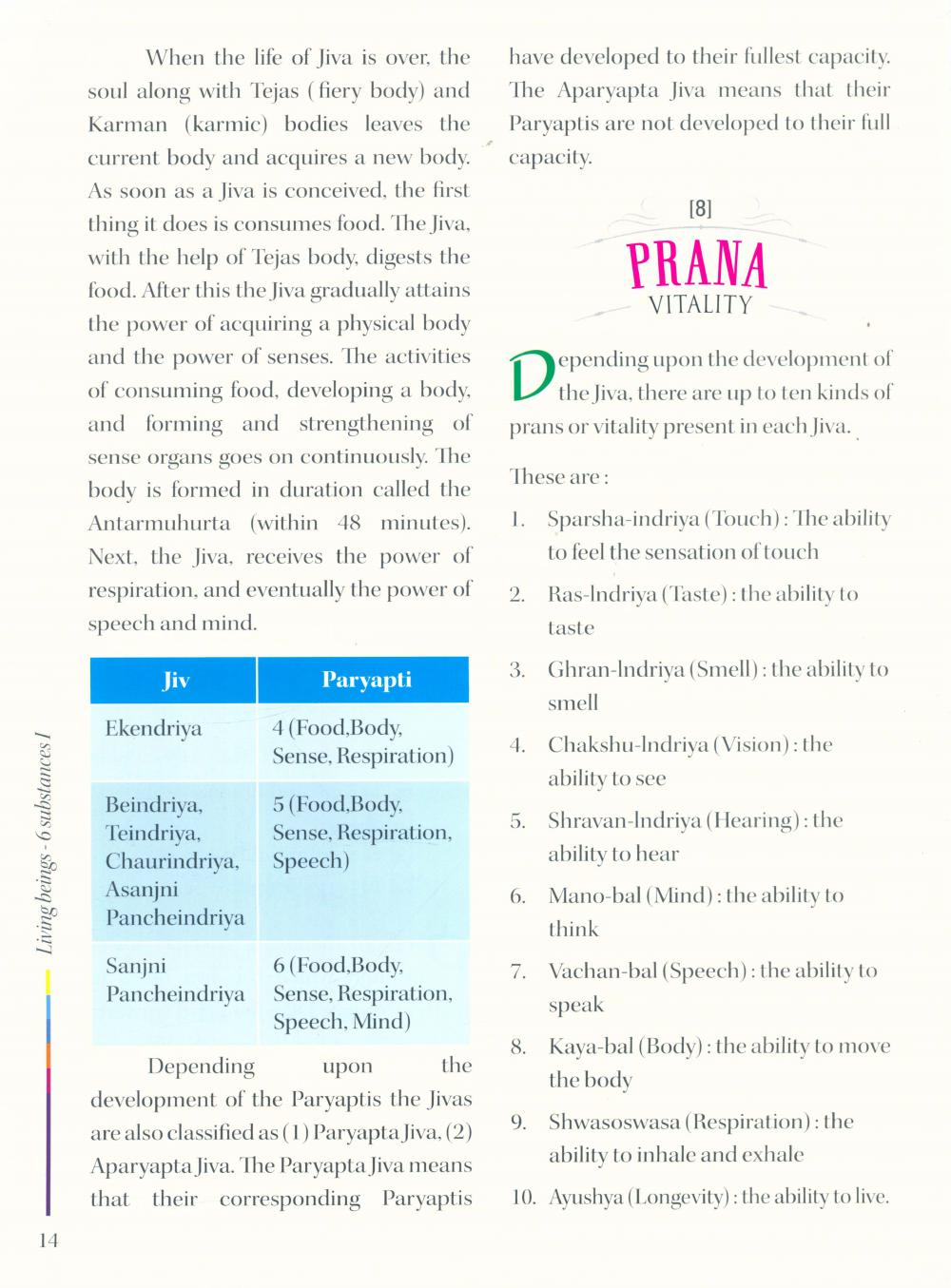________________
have developed to their fullest capacity. The Aparyapta Jiva means that their Paryaptis are not developed to their full capacity.
[8]
PRANA
VITALITY
When the life of Jiva is over, the soul along with Tejas (fiery body) and Karman (karmic) bodies leaves the current body and acquires a new body. As soon as a Jiva is conceived, the first thing it does is consumes food. The Jiva, with the help of Tejas body, digests the food. After this the Jiva gradually attains the power of acquiring a physical body and the power of senses. The activities of consuming food, developing a body, and forming and strengthening of sense organs goes on continuously. The body is formed in duration called the Antarmuhurta (within 48 minutes). Next, the Jiva, receives the power of respiration, and eventually the power of speech and mind.
N epending upon the development of
the Jiva, there are up to ten kinds of prans or vitality present in each Jiva.
These are:
Jiv
Paryapti
Ekendriya
4 (Food,Body, Sense, Respiration)
Living beings - 6 substances /
1. Sparsha-indriya (Touch): The ability
to feel the sensation of touch 2. Ras-Indriya (Taste): the ability to
taste 3. Ghran-Indriya (Smell): the ability to
smell 4. Chakshu-Indriya (Vision): the
ability to see 5. Shravan-Indriya (Hearing): the
ability to hear Mano-bal (Mind): the ability to
think 7. Vachan-bal (Speech): the ability to
Beindriya, Teindriya, Chaurindriya, Asanjni Pancheindriya
5 (Food, Body, Sense, Respiration, Speech)
Sanjni Pancheindriya
6 (Food, Body, Sense, Respiration, Speech, Mind)
speak
Depending upon the development of the Paryaptis the Jivas are also classified as (1) Paryapta Jiva, (2) Aparyapta Jiva. The Paryapta Jiva means that their corresponding Paryaptis
8. Kaya-bal (Body): the ability to move
the body 9. Shwasoswasa (Respiration): the
ability to inhale and exhale 10. Ayushya (Longevity): the ability to live.
14




